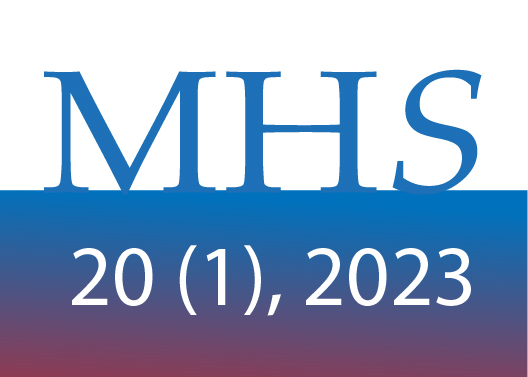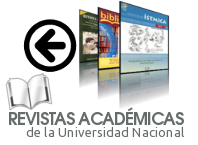Wearable Sports Technology Development in Costa Rica: Inertial Measurement Unit Integration for Real-Time External Load Monitoring
DOI:
https://doi.org/10.15359/mhs.20-1.1Keywords:
wearable electronics, physical test, exercise, trainingAbstract
The increasing trend and projection for the use of wearable sensors technology in the general population have led to the development of different inertial measurement units (IMU) to monitor activity and motion variables during exercise or sports. This study aims to systematize the practical experience of developing an inertial measurement device to quantify external load in real time for runners. This article shows the installed capacity of Costa Rican higher education institutions to integrate existing sensors available in the international market in a single device to program it and use it for different sport science purposes. Two scientific laboratories joined resources and integrated an interdisciplinary team composed of exercise physiologists, sports scientists, physiotherapists, and electromechanical engineers who globally faced the challenge of creating SafeRun IMU. In this case, an IMU was constructed with great success, capable of quantifying external load variables controlled from a mobile device in real-time. The results showed an acceptable agreement and reliability of the data extracted from the IMU. The information collected from this IMU could be used to control and quantify external load to develop or redirect exercise programming and prescription and prevent overuse injuries or physical overload conditions. This device differs from other existing ones due to its small size and portability, which benefits its commercialization and massification.
References
Alexander, J. P., Hopkinson, T. L., Wundersitz, D. W. T., Serpell, B. G., Mara, J. K., & Ball, N. B. (2016). Validity of a Wearable Accelerometer Device to Measure Average Acceleration Values During High-Speed Running: Journal of Strength and Conditioning Research, 30(11), 3007-3013. https://doi.org/10.1519/JSC.0000000000001396
Aroganam, G., Manivannan, N., & Harrison, D. (2019). Review on Wearable Technology Sensors Used in Consumer Sport Applications. Sensors, 19(9), 1983. https://doi.org/10.3390/s19091983
Camomilla, V., Bergamini, E., Fantozzi, S., & Vannozzi, G. (2018). Trends Supporting the In-Field Use of Wearable Inertial Sensors for Sport Performance Evaluation: A Systematic Review. Sensors, 18(3), 873. https://doi.org/10.3390/s18030873
Clansey, A. C., Hanlon, M., Wallace, E. S., & Lake, M. J. (2012). Effects of fatigue on running mechanics associated with tibial stress fracture risk. Medicine and Science in Sports and Exercise, 44(10), 1917-1923. https://doi.org/10.1249/MSS.0b013e318259480d
Cochrum, R. G., Connors, R. T., Coons, J. M., Fuller, D. K., Morgan, D. W., & Caputo, J. L. (2017). Comparison of Running Economy Values While Wearing No Shoes, Minimal Shoes, and Normal Running Shoes: Journal of Strength and Conditioning Research, 31(3), 595-601. https://doi.org/10.1519/JSC.0000000000000892
Cohen, J. (1988). Statistical power analysis for the behavioral sciences (2nd ed). L. Erlbaum Associates.
Colby, M. J., Dawson, B., Heasman, J., Rogalski, B., & Gabbett, T. J. (2014). Accelerometer and GPS-Derived Running Loads and Injury Risk in Elite Australian Footballers: Journal of Strength and Conditioning Research, 28(8), 2244-2252. https://doi.org/10.1519/JSC.0000000000000362
Cooper, R. G. (2006). Managing Technology Development Projects. Research-Technology Management, 49(6), 23-31. https://doi.org/10.1080/08956308.2006.11657405
Gabbett, T. J. (2016). The training—injury prevention paradox: Should athletes be training smarter and harder? British Journal of Sports Medicine, 50(5), 273-280. https://doi.org/10.1136/bjsports-2015-095788
García-Pérez, J. A., Pérez-Soriano, P., Llana Belloch, S., Lucas-Cuevas, A. G., & Sánchez-Zuriaga, D. (2014). Effects of treadmill running and fatigue on impact acceleration in distance running. Sports Biomechanics, 13(3), 259-266. https://doi.org/10.1080/14763141.2014.909527
Gómez-Carmona, C. D., Pino-Ortega, J., Sánchez-Ureña, B., Ibáñez, S. J., & Rojas-Valverde, D. (2019). Accelerometry-Based External Load Indicators in Sport: Too Many Options, Same Practical Outcome? International Journal of Environmental Research and Public Health, 16(24), 5101. https://doi.org/10.3390/ijerph16245101
Gutiérrez-Vargas, R., Martín-Rodríguez, S., Sánchez-Ureña, B., Rodríguez-Montero, A., Salas-Cabrera, J., Gutiérrez-Vargas, J. C., Simunic, B., & Rojas-Valverde, D. (2018). Biochemical and Muscle Mechanical Postmarathon Changes in Hot and Humid Conditions: Journal of Strength and Conditioning Research, 1. https://doi.org/10.1519/JSC.0000000000002746
Hopkins, W. G., Marshall, S. W., Batterham, A. M., & Hanin, J. (2009). Progressive Statistics for Studies in Sports Medicine and Exercise Science: Medicine & Science in Sports & Exercise, 41(1), 3-13. https://doi.org/10.1249/MSS.0b013e31818cb278
Kottner, J., & Streiner, D. L. (2011). The difference between reliability and agreement. Journal of Clinical Epidemiology, 64(6), 701-702. https://doi.org/10.1016/j.jclinepi.2010.12.001
Kramer, M. S., & Feinstein, A. R. (1981). Clinical biostatistics. LIV. The biostatistics of concordance. Clinical Pharmacology and Therapeutics, 29(1), 111-123. https://doi.org/10.1038/clpt.1981.18
Li, R. T., Kling, S. R., Salata, M. J., Cupp, S. A., Sheehan, J., & Voos, J. E. (2016). Wearable Performance Devices in Sports Medicine. Sports Health, 8(1), 74-78. https://doi.org/10.1177/1941738115616917
Pino-Ortega, J., Gómez-Carmona, C. D., Nakamura, F. Y., & Rojas-Valverde, D. (2020). Setting Kinematic Parameters That Explain Youth Basketball Behavior: Influence of Relative Age Effect According to Playing Position. The Journal of Strength & Conditioning Research, Publish Ahead of Print. https://doi.org/10.1519/JSC.0000000000003543
Pino-Ortega, J., Rojas-Valverde, D., Gómez-Carmona, C. D., Bastida-Castillo, A., Hernández-Belmonte, A., García-Rubio, J., Nakamura, F. Y., & Ibáñez, S. J. (2019). Impact of Contextual Factors on External Load during a Congested-Fixture Tournament in Elite U'18 Basketball Players. Frontiers in Psychology, 10. https://doi.org/10.3389/fpsyg.2019.01100
Quinn, T. J., & Manley, M. J. (2012). The impact of a long training run on muscle damage and running economy in runners training for a marathon. Journal of Exercise Science & Fitness, 10(2), 101-106. https://doi.org/10.1016/j.jesf.2012.10.008
Rojas-Valverde, D. (2019). Brief historical review of distance and ultradistance runnig in Costa Rica and the world. Viref:revista de Educación Física, 8(1), 1-19.
Rojas-Valverde, D., Gómez-Carmona, C. D., Fernández-Fernández, J., García-López, J., García-Tormo, V., Cabello-Manrique, D., & Pino-Ortega, J. (2020). Identification of games and sex-related activity profile in junior international badminton. International Journal of Performance Analysis in Sport, 20(3), 1-16. https://doi.org/10.1080/24748668.2020.1745045
Rojas-Valverde, D., Olcina, G., Gutiérrez-Vargas, R., & Crowe, J. (2019). Heat Strain, External Workload, and Chronic Kidney Disease in Tropical Settings: Are Endurance Athletes Exposed? Frontiers in Physiology, 10, 1403. https://doi.org/10.3389/fphys.2019.01403
Rojas-Valverde, D., Sánchez-Ureña, B., Pino-Ortega, J., Gómez-Carmona, C., Gutiérrez-Vargas, R., Timón, R., & Olcina, G. (2019). External Workload Indicators of Muscle and Kidney Mechanical Injury in Endurance Trail Running. International Journal of Environmental Research and Public Health, 16(20), 3909. https://doi.org/10.3390/ijerph16203909
Rowlands, A. V., Fraysse, F., Catt, M., Stiles, V. H., Stanley, R. M., Eston, R. G., & Olds, T. S. (2015). Comparability of Measured Acceleration from Accelerometry-Based Activity Monitors: Medicine & Science in Sports & Exercise, 47(1), 201-210. https://doi.org/10.1249/MSS.0000000000000394
Saunders, P. U., Pyne, D. B., Telford, R. D., & Hawley, J. A. (2004). Factors affecting running economy in trained distance runners. Sports Medicine, 34(7), 465–485.
Seshadri, D. R., Drummond, C., Craker, J., Rowbottom, J. R., & Voos, J. E. (2017). Wearable Devices for Sports: New Integrated Technologies Allow Coaches, Physicians, and Trainers to Better Understand the Physical Demands of Athletes in Real time. IEEE Pulse, 8(1), 38-43. https://doi.org/10.1109/MPUL.2016.2627240
Seshadri, D. R., Li, R. T., Voos, J. E., Rowbottom, J. R., Alfes, C. M., Zorman, C. A., & Drummond, C. K. (2019). Wearable sensors for monitoring the internal and external workload of the athlete. NPJ Digital Medicine, 2. https://doi.org/10.1038/s41746-019-0149-2
Shorten, M., & Mientjes, M. I. V. (2011). The ‘heel impact’ force peak during running is neither ‘heel’ nor ‘impact’ and does not quantify shoe cushioning effects. Footwear Science, 3(1), 41-58. https://doi.org/10.1080/19424280.2010.542186
Sinclair, J., Taylor, P. J., & Hobbs, S. J. (2018). Kinematic regulation of time and frequency domain components of accelerations measured at the tibia during heel-toe running. Human Movement, 15(1), 51-55. https://doi.org/10.2478/humo-2014-0002
Small, K., & Relph, N. (2018). Musculoskeletal Injury Rates in Multiday Marathon Runners Performing Ten Consecutive Marathons on a Repeat Course. Journal of Athletic Enhancement, 2018. https://doi.org/10.4172/2324-9080.1000280
Staunton, C., Wundersitz, D., Gordon, B., & Kingsley, M. (2018). Accelerometry-Derived Relative Exercise Intensities in Elite Women’s Basketball. International Journal of Sports Medicine, 39(11), 822-827. https://doi.org/10.1055/a-0637-9484
Vernillo, G., Giandolini, M., Edwards, W. B., Morin, J.-B., Samozino, P., Horvais, N., & Millet, G. Y. (2017). Biomechanics and Physiology of Uphill and Downhill Running. Sports Medicine, 47(4), 615-629. https://doi.org/10.1007/s40279-016-0605-y
Zaki, R., Bulgiba, A., Ismail, R., & Ismail, N. A. (2012). Statistical methods used to test for agreement of medical instruments measuring continuous variables in method comparison studies: A systematic review. PloS One, 7(5), e37908. https://doi.org/10.1371/journal.pone.0037908
Downloads
Published
How to Cite
Issue
Section
License
General conditions
MHSalud: Journal in Human Movement Sciences and Health by the Universidad Nacional is cover under a Creative Commons Atribución-NoComercial-SinDerivadas 3.0 Costa Rica license.
The journal is hosted in open access repositories such as the Institutional Repository of the Universidad Nacional, the Kimuk Repository of Costa Rica and La Referencia.
The editorial source of the journal must be recognized. Use the doi identifier for this purpose.
Self-archiving policy: The journal allows the self-archiving of the articles in their peer-reviewed version, edited and approved by the Editorial Board of the Journal to be available in Open Access through the Internet. More information in the following link: https://v2.sherpa.ac.uk/id/publication/25815



















